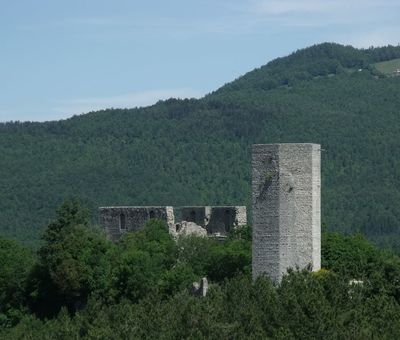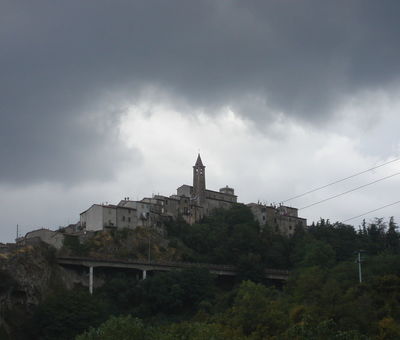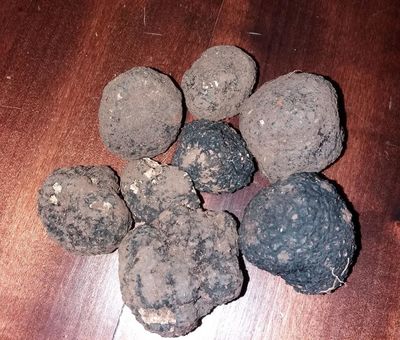Three brothers, a manor house and the dice game
The secret of Castell’Azzara is embedded in its coat-of-arms: a manor house with three red towers, a die above each one. Each die has a number: three on the one on the right, five on the one in the middle, the tallest; and four on the last one, on the left. What do these numbers mean? They hark back to the game of dice that Ildebrando, Bonifacio and Guglielmo Aldobrandeschi played in 1212. The three brothers were travelling through the Amiata area to inspect the property of the local counts, when at a certain point they stopped on top of a hill that overlooked the whole Fiora valley. The landscape was glorious, but what primarily interested the brothers was the strategic position, a perfect defensive site. It seemed the right place to settle: it needed only a castle to crown that natural vantage point. “It needs to be built and we should build it here,” they thought as one. But who should do it? They decided to let fate decide and entrust it to a medieval game of chance. What came of it? The story does not tell us, but whoever built the castle built it with the three brothers in mind, erecting not one but three towers.
The cinnabar mines, second only to Spain’s
Today Castell’Azzara is a village of fewer than two thousand souls, a web of alleys named after writers and poets. You wouldn’t imagine, looking at it, but in the recent past it was an important centre of mineral production. It was in fact the excavations that made the town autonomous from the Santa Fiora municipality in 1915. From the nineteenth to the twentieth centuries Castell’Azzara was the hub of cinnabar extraction, second only to Spain’s mines in Almadén. Cinnabar is a rare mineral, and until a few years ago mercury was extracted from it: it is, therefore, highly toxic. But stories and legends have sprung up around it, and it is a source of inspiration in Eastern philosophy. Many considered it a magical, primordial substance on account of its nestling in volcanic rocks, in the bowels of the earth. Its red colour ensured a career in making pigments for paint and even cosmetics, despite its toxicity.
The way of the truffles passes through here too
Castell’Azzara stands on the via Francigena, the route that pilgrims made by foot from the English Channel to Rome. But this is not the only journey that pertains to the town near Amiata. There is another, much beloved, less by pilgrims than by gourmets, by truffle-lovers specifically. The truffle, a refined protagonist of Italian cooking, has its own dedicated route running from Piedmont to Campania. It was set up by the National Association of Truffle Cities, who intend to push the path even further south. For the most part, it follows ancient trade routes, along which guest houses were built in the towns and villages for the sake of ease of commerce. The truffle tradition has contributed to the fame of the area, which in turn helps to preserve its riches. Today fifty or so cities feature along this route, and together they aspire to UNESCO recognition.







